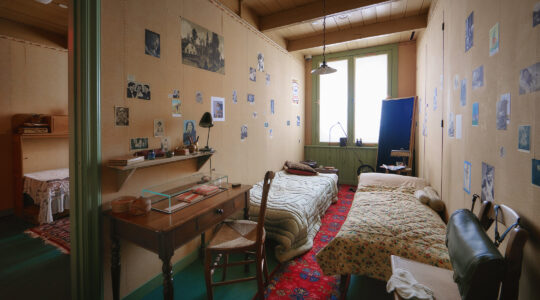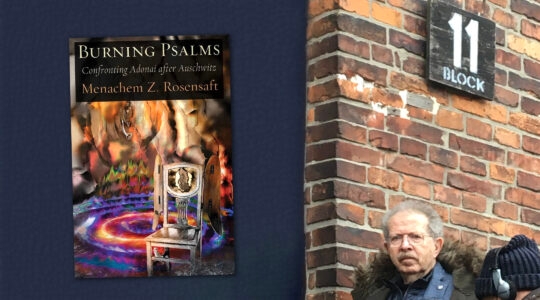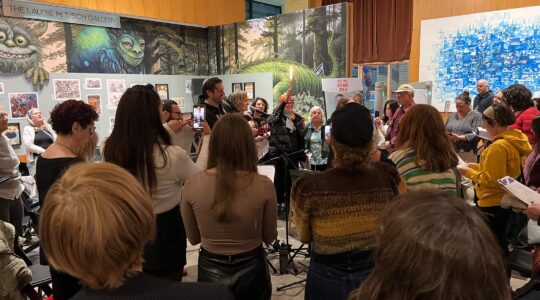Last year, I found myself at the National Museum of American Jewish History in Philadelphia, pondering an exhibition titled “1917: How One Year Changed the World.” It was a sharp, deliberate spotlight on the issues that defined geopolitics during the Great War era — and, fascinatingly, a century later: nationalism, militarism, Zionism, competing liberal and illiberal ideologies.
I’ve been thinking about those parallels ever since, particularly as we approach the 100th anniversary of the armistice that ended World War I. On Nov. 11, 1918, in a thick forest northeast of Paris, Allied and German forced signed the accord that ended what was then optimistically called the War to End All Wars.
The lessons, and ironies, of that complex era are worth contemplating beyond the centenary — and for travelers in Europe this year, the armistice anniversary marks the last chance to experience commemorative events.
Many of these are scattered throughout northeastern France and Flemish Belgium. From Paris, travelers might detour to visit one or more significant sites, either as a day’s excursion or — better — a road trip through one dark, important historical chapter.
A quarter-million Jewish Americans served in World War I. Many of them fought amid the forests and fields east of Paris, where the remains of destroyed villages and signs warning of unexploded bombs still eerily dot the landscape.
European Jewry, meanwhile, was profoundly affected by the war’s dénouement — especially the Treaty of Versailles, signed seven months after the armistice. Scholars have long debated the relationship between Germany’s humiliating defeat, with its attendant reparation burden, and the ensuing Weimar era, which gave rise to Nazism and the Holocaust.
The postwar order was sealed in the woods of France’s Oise region, northeast of Paris, marked by a memorial museum at Compiègne. I had the opportunity to visit the site known as the Glade of the Armistice with cousins who lived nearby, and what struck me was the sheer ordinariness of the spot — thick groves of trees on flat ground under a gray sky.
For Hitler, the glade was anything but benign. When his German army invaded France in 1940, Hitler and his henchmen triumphantly removed the carriage of World War I Allied Commander Marshall Foch, which had marked the spot. The memorial was later restored, and an enlarged museum reopened this spring after a multi-year renovation, illuminating the tortuous history of these woods.
The experience is more visceral amid the reconstructed trenches and the craters of century-old shells at Vimy Ridge Memorial Park. In a field pockmarked with bomb remnants, a massive pair of stone obelisks rises nearly 100 feet high in tribute to Canadian Allied forces during the war’s final years.
Those soldiers were defending towns including nearby Arras, where you can actually wander Allied tunnels at the Wellington Quarry Museum. An elevator takes visitors down a shaft into the network of quarries constructed by British forces under the city, connecting to a subterranean tunnel system that — astonishingly — dates to Roman times.
Nearby in the town of Meaux, the belated but critical American contribution to World War I is a focus this year at the Museum of the Great War. “Americans in the Great War: A Photographic Testimony” invites you to look into the faces of bygone countrymen; there’s even a reconstructed American camp.
It’s a short drive east to the American Cemetery and Memorial at Aisne-Marne, where a field of white crosses pays tribute to more than 2,000 Allied servicemen who are buried here. Most died on the Marne battlefields during the summer of 1918, in a brutal push that helped turn the tide of the war.
In Belgium, Nov. 11 is a national holiday — and one place to experience the centenary is Ypres, the Flemish city around which significant fighting took place late in the war.
Ypres itself is a pleasant town, with a lively market square dominated by Gothic spires, canals snaking alongside stone houses, and an array of World War I cemeteries and memorials. For more perspective on the war, visit the In Flanders Field Museum, where archaeological battlefield excavations are on view at this year’s “Traces of War” exhibition.
Like the annual Poppy Parade, an Ypres tradition for Armistice Day, the museum’s name was inspired by lines from a famous poem about the fighting that took place here. Thousands will gather on the 11th hour of the 11th day of the 11th month, heeding us all to remember what happened here, and why.
The New York Jewish Week brings you the stories behind the headlines, keeping you connected to Jewish life in New York. Help sustain the reporting you trust by donating today.




